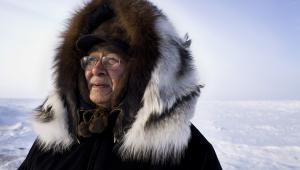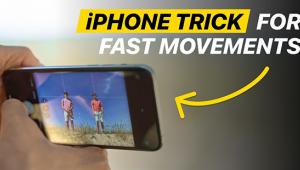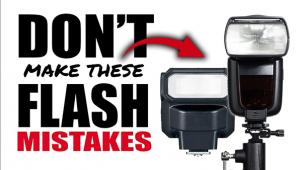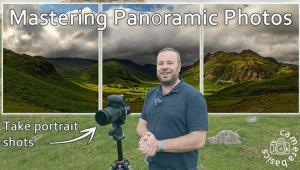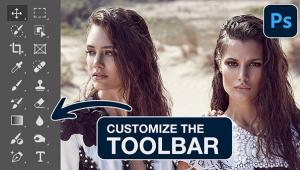Copyrights, Model Releases, And Contracts: What Every Photographer Should Know!
You don’t bother to get a release…”
There are legal issues that concern all photographers—copyrights, contracts, and the law concerning privacy rights (model releases). In this article we’ll go over these matters with a panel of experts in the field, but of course not every issue can be covered completely, so I’ve included a host of web resources for further exploration and education.
My thanks go to the following contributors for their contributions to this article. They include Alan Behr, a partner in the Corporate & Business Law Department and Intellectual Property Practice at Phillips Nizer LLP; Leslie Burns, an attorney with the Law Office of Carolyn E. Wright, LLC and Burns Auto Parts—Consultants; James Cavanaugh, an aerial and architectural photographer and past president of the American Society of Media Photographers (ASMP); and Alicia Calzada, an associate in the Business Litigation Practice Group in the San Antonio and Austin offices of Haynes and Boone, LLP. Among other media clients, she serves as an attorney for the National Press Photographers Association (NPPA). Prior to becoming an attorney, Calzada was a photojournalist for over 20 years.
Model Releases
Shutterbug: The photographer owns the copyright but individuals own their privacy rights. So, when do you need a model release? For example, what if the image of the person or people is “just” for fine art photography or for inclusion in a photographer’s portfolio?
Leslie Burns: I always try to reframe this question. Instead of thinking “when do I need a release,” I’d prefer photographers to think “I will get a release whenever I can.” That shift, to getting releases, can make a huge difference down the line.
Imagine that you shoot something “fine art” or “personal” that you yourself think no one will ever want to use commercially. You don’t bother to get a release. You put the image in your portfolio or on your site and Coca-Cola Company comes along and wants to license it. You can’t, because you don’t have a release. This happens (okay, maybe not Coca-Cola Company but some client) far more often than most photographers realize.
Besides, even if you don’t legally need a release for some use that does not mean you won’t get sued. People will sue, including people who were friends or clients. Even if they will eventually lose, it will cost you a bundle to defend the case unless you can prove you had the right to use their likeness. One of the best pieces of evidence you can have is a signed release, preferably with a photo of the signer’s identification for proof of age. So please, just make it a regular thing and get a release. The apps make it darn easy to do today and an e-sig is perfectly valid in all 50 states for this.
Contracts
SB: What could happen when a photographer gets paid by a client but does not use a contract to specify the usage? Many clients will assume they have “all rights” because they “paid for it.”
Alicia Calzada: From a legal perspective, a photographer and a client always have a contract—it will be either oral or written. A written contract is better because it creates good evidence of the intent and the agreement and it also makes everything clear for both sides. It is difficult to prove the details of an oral agreement because people often remember differently.
If a contract doesn’t specify usage and the client and photographer end up in court, a judge will “fill the gap” regarding the missing terms. Two common methods of doing this are by looking at past agreements or behavior between the two; and looking at industry standards. The communication surrounding the assignment might also be used to figure out what the client and the photographer intended.
The photographer in this situation will retain the copyright, because the only way to give up your copyright is by agreeing to do so in a signed written agreement (this can be either a work-for-hire agreement, which must be signed, or a copyright “assignment,” which must be signed). However, just because your client doesn’t have your copyright, doesn’t mean a judge won’t find a broad implied license when she interprets your agreement.
From a practical perspective, getting into a disagreement with your client over usage is a great way to ruin your relationship with your client. In the “real world” most of these disagreements don’t end up in court but may end up with a disgruntled client or a photographer giving up more rights than they ever intended. Written agreements with clients—before the photos are ever taken—are not just the best way to protect yourself legally, they are the best way to ensure a long, happy relationship with your client.
Leslie Burns: This is a very expensive lawsuit waiting to happen. It is so important that photographers provide explicit licenses to their clients—even if the use granted is very broad. Clients can assume whatever they want, but unless they have proof of a license of some sort, they can’t use the work without infringing. However, there are implied licenses, that is, a license that a court can imply from your actions or from your oral statements, like if you tell your client they can use it and there is someone who heard you say that, boom, that’s a license with a witness who can testify to it—but those oral or implied licenses are never exclusive. Exclusivity requires a writing. That being said, a writing can be an e-mail—it doesn’t have to be a formal contract.
So, whether oral and/or implied or possibly a license in writing via e-mail or text, fighting it out in court is going to take a ton of time and money. You just do not want to go there. Write your licenses instead and make your life much easier. Honestly, as an attorney, I would be very hesitant to take a case of a photographer (or illustrator or other creative) who didn’t have some proof of the terms of the license. Yes, you may have the right to control your work but when you don’t make that clear, things can get very ugly.
Copyrights
SB: What is the legal copyright notice and when should it be used? What about on websites?
James Cavanaugh: The United States Copyright Law clearly states that there are only three (3) acceptable forms that a copyright notice may take. Each follows the format “Copyright – Year of creation – Copyright owner’s name.” Here are the acceptable forms: © 2013 James Cavanaugh, Copyright 2013 James Cavanaugh, and Copr. 2013 James Cavanaugh.
It is generally thought that the form “© 2013 James Cavanaugh” provides the greatest international protection. Since March 1989, a copyright notice has not been required on copyrighted work created after that date in the United States. However, it is good practice to include your copyright notice on your copyrightable work. If nothing else, it aids in helping anyone who would like to use a photograph to find the copyright owner. It also minimizes a copyright infringement defense of “innocent infringement” or your work being declared an “orphan” if and when Orphan Works legislation is passed in the United States. The copyright notice can be on or adjacent to printed materials or appear in visible form on digital publications (such as websites). It should also always be included in the metadata of all of your digital files.
Leslie Burns: As for when to use it, use it always! Here is why: there is a provision of the Digital Millennium Copyright Act (DMCA) that says that if you post your work with a copyright notice and someone uses your work without that notice, intentionally hiding that it was copyrighted by you, that is a violation of the law and they are subject to statutory damages of between $2500 and $25,000 for that! Oh, and you can get attorneys’ fees and costs, too.
Even more, if they post a false notice or something that indicates that someone other than you is the owner of the work, that is a second violation of the statute and you can get another $2500 to $25,000 for that. Finally, if you post your work in a publicly accessible manner (like on your website) with a clear and properly formatted copyright notice on it (as a watermark) or tucked up next to it like a credit line, an infringer probably can’t claim the defense of “innocent infringement,” even if the infringer gets the work from some other source. And, by the way, that is the best way to use the credit line, as a watermark or a credit line with each individual work. A copyright for your website is for the site as a whole, not the individual works on it, roughly speaking.
SB: Why and when should copyright registration be filed and can images be grouped to register?
James Cavanaugh: Registration is required before any legal action may be taken in an infringement case. However, if an infringement takes place before a work is registered, legal damages are extremely limited. Without prior registration, the cost to prosecute an infringement will likely be far greater than any potential damage award. Registering a work before an infringement provides for additional statutory damages and the ability to collect legal and court costs.
Photographers should register all of their work on a regular basis. At least once every 90 days. More frequently is highly recommended. The current regulations allow for photographers to register groups of images on a single registration. Today, the preferred method to register groups of images is using the Copyright Office’s web-based eCO registration process. It is important to note that published and unpublished images may NOT be registered together.
Unpublished images may be registered in large groups and do not have to be related. While the current regulations allow for groups of unpublished images from various years to be registered together, many experts recommend that each registration be limited to images in the same calendar year. This is due to the fact that the eCO registration only allows for a single year on the form.
Groups of published images may be registered as long as the images are from “the same unit of publication.” Unfortunately, what constitutes a single unit of publication is not completely clear. We know it can be a book, magazine, calendar, etc. Officials at the Copyright Office have offered their opinion that a website or blog is NOT a single unit of publication due to their fluid and changing nature.
The Copyright Office has a pilot project where you can register unrelated published images from the same calendar year. However, you must contact the office for instructions. For more information on how to register, visit the links listed below at asmp.org or copyright.gov.
Leslie Burns: This is a complicated question that would take pages to answer fully, but the short form is this: file your registrations regularly, preferably every month, for your unpublished works; for your published works, file those when you offer the images to your clients (but absolutely within three calendar months of so doing) and bill the cost to your clients as a part of your expenses.
You cannot register published and unpublished works together. That is the first big rule and one that I hate as it is very archaic and no longer serves a purpose. But it is still the law so you have to follow it and you can’t cheat and say something is/is not published if you know otherwise. When you try to sue someone for infringement, one of the first things they often try to do is “break” the registration and if they can show that you registered something as “unpublished” when it was knowingly published, your suit is dead in the water right there.
Unpublished works can be easily registered en masse. The eCO (Electronic Copyright Office) only limits the number by the total file size of all of them to be uploaded. If you register every month, you are unlikely to have more images than the system can handle. Best practice is to make sure each photograph is named in the registration, by the way. This can be a bit time-consuming but it’s worth it to be extra safe. At the very least, make sure you have the individual images listed by name in the metadata.
Published works are more restricted in how they can be group registered. The best way to avoid this issue for work you know is going to be offered to a client for publication (which is all you need for a work to be published—the offer to a client) is to register each project for a client as published on the date you deliver the files to the client.
The eCO registration is $35. It’s the cheapest insurance you can ever get. Early (“timely”) registration can make the difference between getting a couple of hundred dollars (if anything at all) for an infringement and getting thousands of dollars.
Derivative Works
SB: What exactly is a derivative work and how is it protected by copyright?
James Cavanaugh: A derivative work is a new work created by modifying an existing copyrightable work. This is different than a “collective work” where individually copyrightable elements are combined together, such as a motion picture film or magazine.
How much you change an image before it becomes a derivative is very subjective and open to debate. Is converting a color image to black and white a derivative? Perhaps. Is changing the contrast, cropping an image, or correcting perspective in an architectural photograph a derivative? Again, maybe. A test that you can apply is to ask if a reasonable, untrained person (your possible juror in an infringement case) would see it as a different image. To have the most protection, if you make significant changes to an original image as part of your workflow, register the new image independently from the original image.
SB: What are the rules about photography as appropriation art and the impact of copyright law? There seems to be a lot of confusion on this issue, especially among fine art photographers.
Alan Behr: If you photograph a photograph or scan a photograph and transfer the image to another medium, who owns the second image and to what extent does the owner of the underlying photograph have control over the second work and a right to compensation? That has been the subject of major and important litigation involving artists such as Richard Prince and Shepard Fairey. A so-called “copy left” has arisen that, in the spirit of the public belief noted above that all that can be accessed electronically should be freely reachable and changeable, has campaigned to drop copyright restrictions that limit legally (but not always practically) what appropriation artists and mash-up artists can do.
Clearing Up Myths
SB: What do you think are the most misunderstood aspects of photography copyright and contracts?
Alan Behr: The most frustrating thing for photographers regarding copyright is the incorrect belief by much of the public that, if you can get it on your smartphone, computer, tablet, or other device, it is free. That is, access equals permission. Of course, that is not true, and it costs photographers a good bit of money each year.
Regarding contracts, misunderstandings are frequently seen in demands for the transfer and assignment of all rights, in all media, rather than the offer of a license. Transfer has become accepted practice in photojournalism, brought on, in some measure, out of fear of the unknown—what new media may be out there, just over the horizon for which rights will later be needed.
A problem is that editors and art directors sometimes do not fully understand their own contracts. They get them from the legal department or their superiors and tell photographers to sign. The photographers may do that and may themselves not fully understand what they signed, with the result that, sometimes, the photographers sign two or more different contracts, transferring all rights to someone else in each of them. So you can end up inadvertently selling 200 percent or more of what you own—which can cause problems down the road. I believe that through trade groups and the Internet, photographers are becoming more aware of those issues than before, but the problems remain.
Web Resources
Contributors
Alan Behr
www.phillipsnizer.com
www.linkedin.com/pub/alan-behr/47/490/7ba (follow him)
Leslie Burns
www.photoattorney.com
www.burnsautoparts.com/blog
Alicia Calzada
www.haynesboone.com/Alicia-Calzada/
James Cavanaugh
www.cavphoto.com
www.facebook.com/pages/James-Cavanaugh-Photography/82050931763
Copyright Links
ASMP
www.asmp.org/copyright
U.S. Copyright Office
www.copyright.gov












